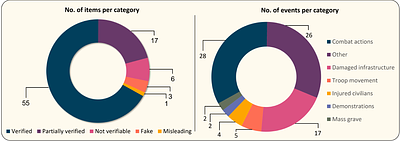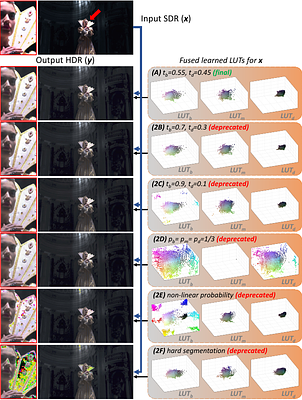By: Sohail Ahmed Khan, Jan Gunnar Furuly, Henrik Brattli Vold, Rano Tahseen, Duc-Tien Dang-Nguyen
This paper investigates the use of computational tools and Open-Source Intelligence (OSINT) techniques for verifying online multimedia content, with a specific focus on real-world cases from the Russia-Ukraine conflict. Over a nine-month period from April to December 2022, we examine verification workflows, tools, and case studies published by \faktiskbar. Our study showcases the effectiveness of diverse resources, including AI tools, geolo... more
This paper investigates the use of computational tools and Open-Source Intelligence (OSINT) techniques for verifying online multimedia content, with a specific focus on real-world cases from the Russia-Ukraine conflict. Over a nine-month period from April to December 2022, we examine verification workflows, tools, and case studies published by \faktiskbar. Our study showcases the effectiveness of diverse resources, including AI tools, geolocation tools, internet archives, and social media monitoring platforms, in enabling journalists and fact-checkers to efficiently process and corroborate evidence, ensuring the dissemination of accurate information. This research underscores the vital role of computational tools and OSINT techniques in promoting evidence-based reporting and combatting misinformation. We also touch on the current limitations of available tools and prospects for future developments in multimedia verification. less
Redistributing the Precision and Content in 3D-LUT-based Inverse Tone-mapping for HDR/WCG Display
0upvotes
By: Cheng Guo, Leidong Fan, Qian Zhang, Hanyuan Liu, Kanglin Liu, Xiuhua Jiang
ITM(inverse tone-mapping) converts SDR (standard dynamic range) footage to HDR/WCG (high dynamic range /wide color gamut) for media production. It happens not only when remastering legacy SDR footage in front-end content provider, but also adapting on-theair SDR service on user-end HDR display. The latter requires more efficiency, thus the pre-calculated LUT (look-up table) has become a popular solution. Yet, conventional fixed LUT lacks ad... more
ITM(inverse tone-mapping) converts SDR (standard dynamic range) footage to HDR/WCG (high dynamic range /wide color gamut) for media production. It happens not only when remastering legacy SDR footage in front-end content provider, but also adapting on-theair SDR service on user-end HDR display. The latter requires more efficiency, thus the pre-calculated LUT (look-up table) has become a popular solution. Yet, conventional fixed LUT lacks adaptability, so we learn from research community and combine it with AI. Meanwhile, higher-bit-depth HDR/WCG requires larger LUT than SDR, so we consult traditional ITM for an efficiency-performance trade-off: We use 3 smaller LUTs, each has a non-uniform packing (precision) respectively denser in dark, middle and bright luma range. In this case, their results will have less error only in their own range, so we use a contribution map to combine their best parts to final result. With the guidance of this map, the elements (content) of 3 LUTs will also be redistributed during training. We conduct ablation studies to verify method's effectiveness, and subjective and objective experiments to show its practicability. Code is available at: https://github.com/AndreGuo/ITMLUT. less

